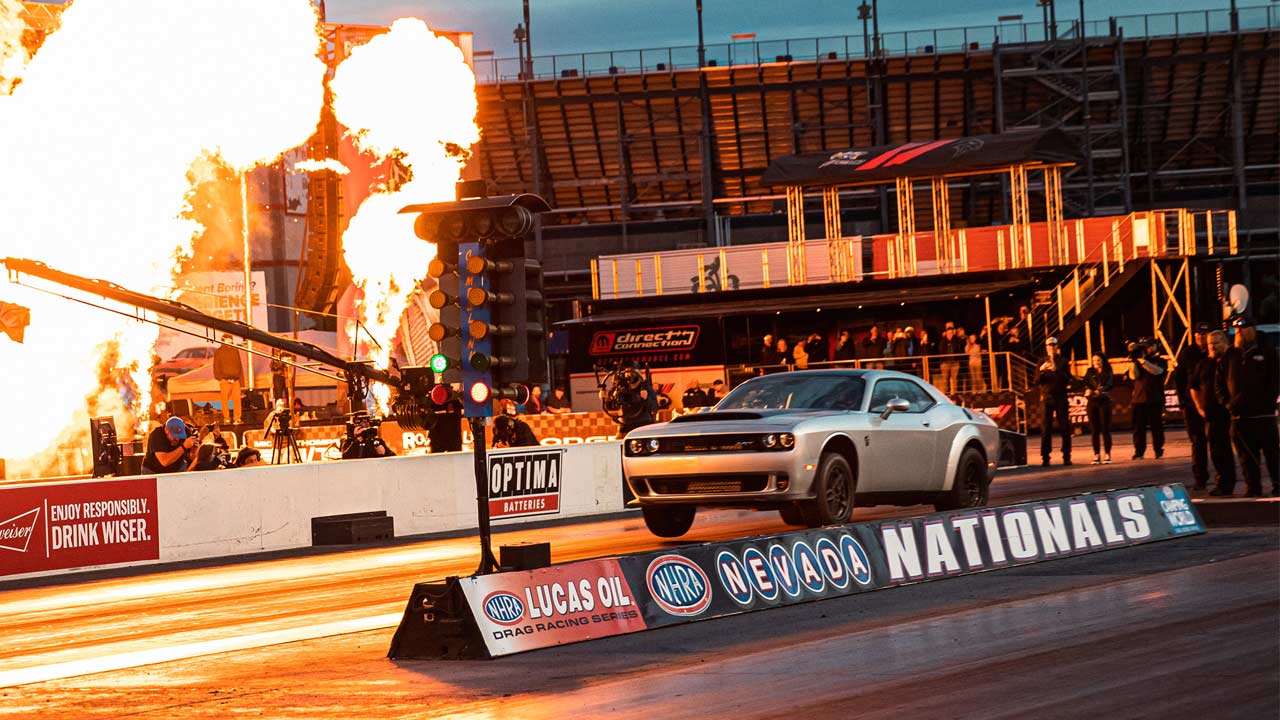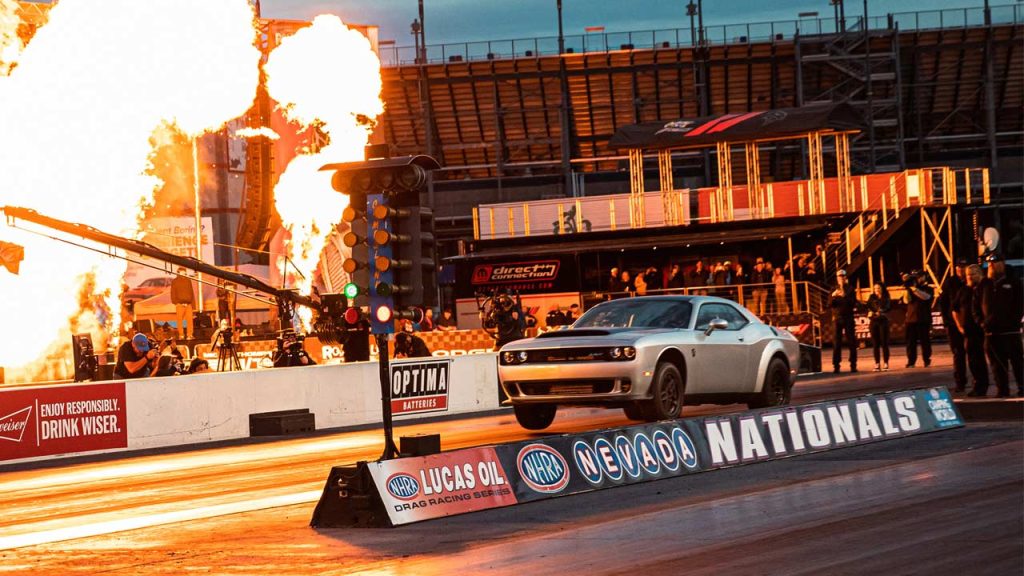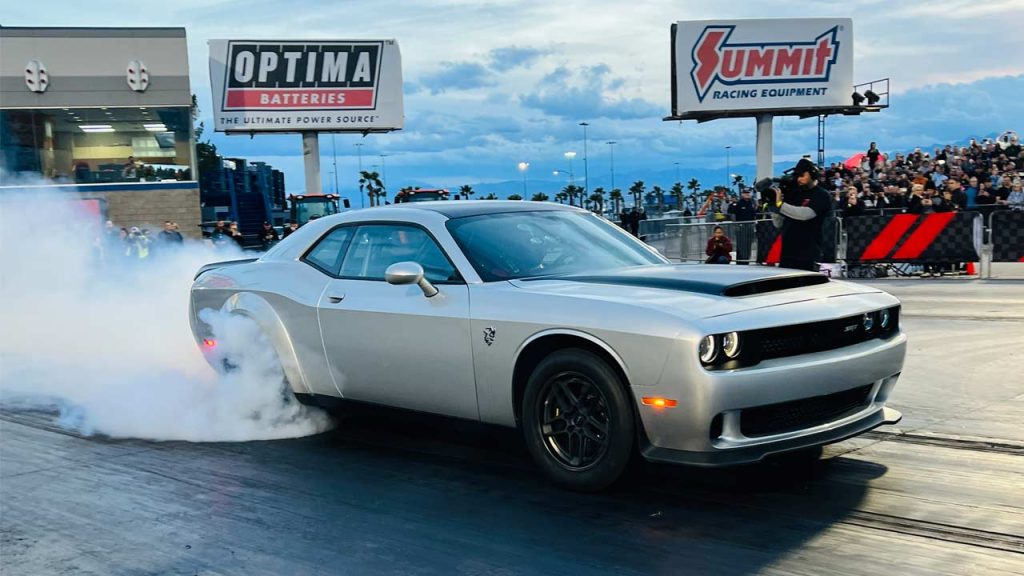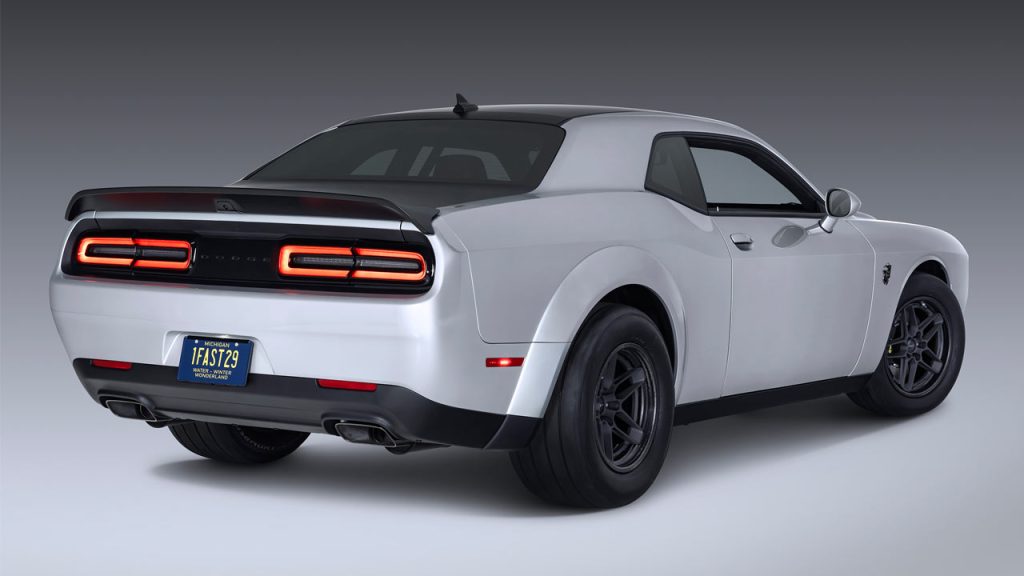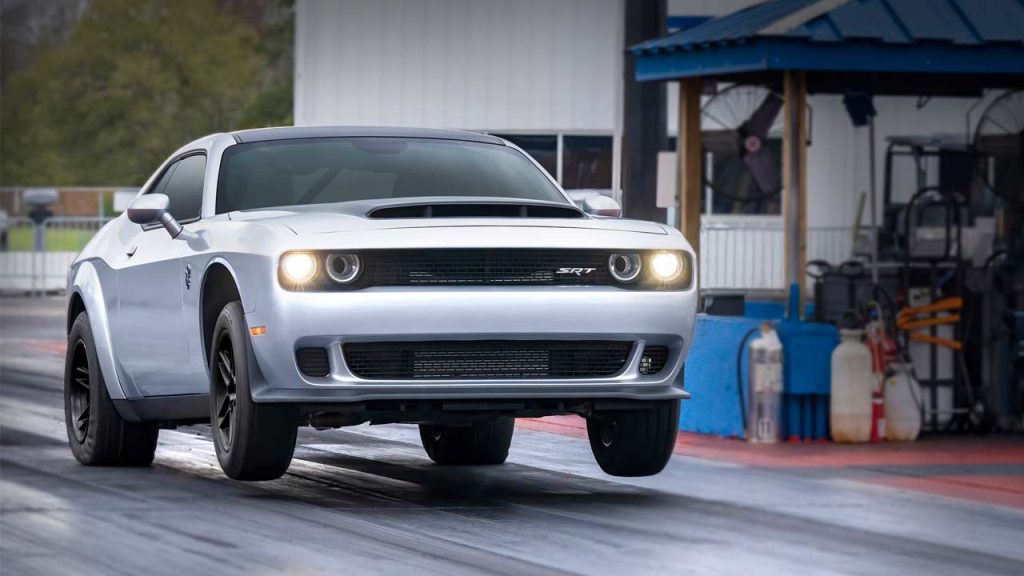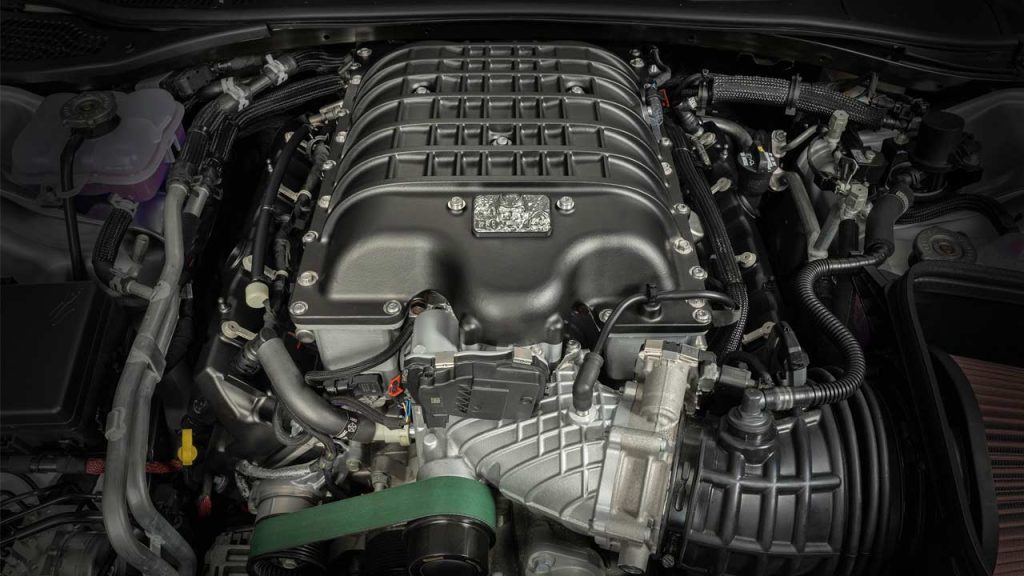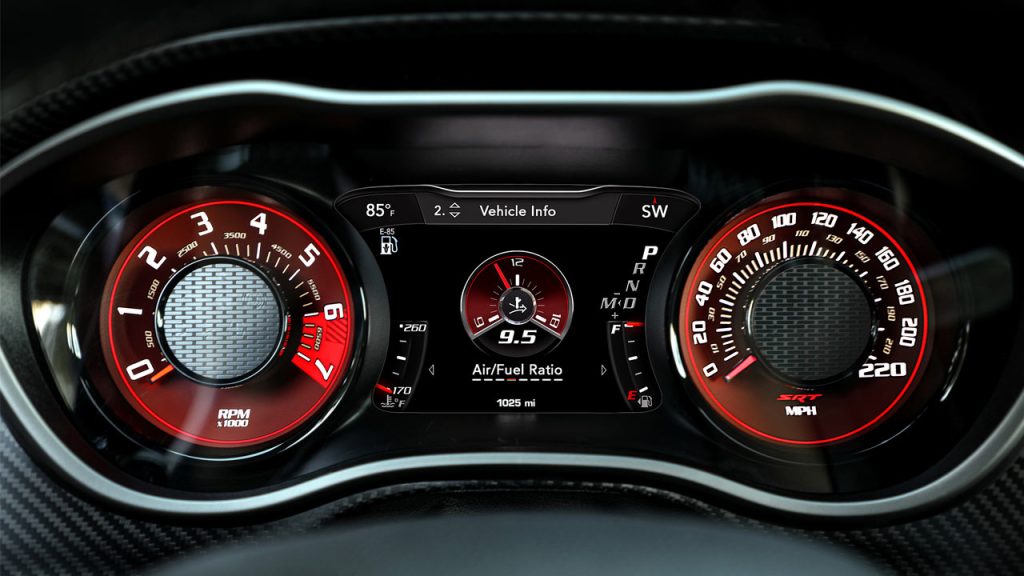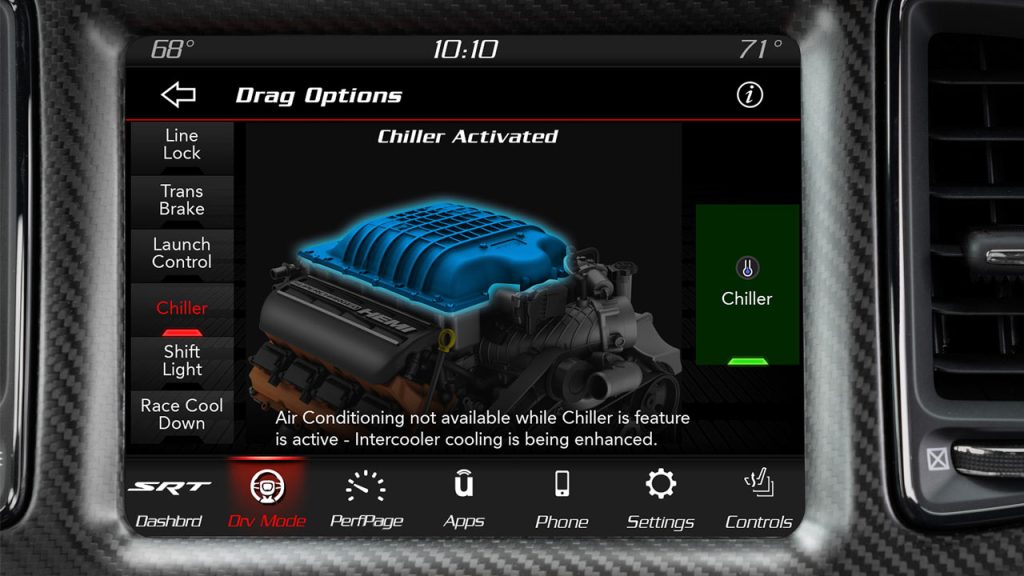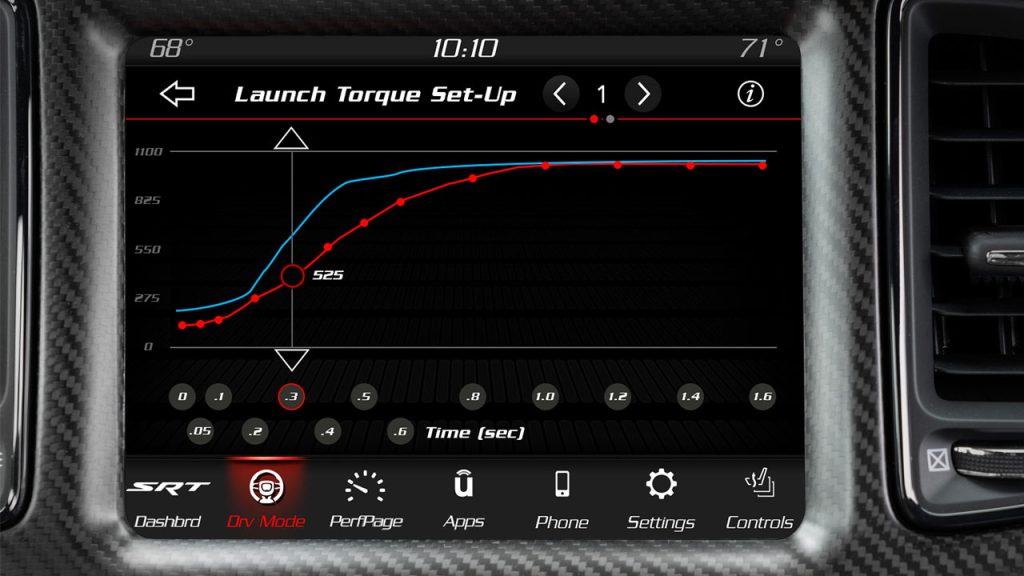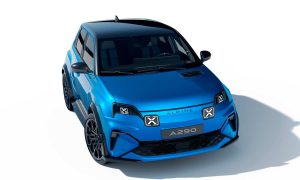Dodge has revealed the Challenger SRT Demon 170—billed as the first factory production car to run the quarter-mile (402 metres) under 9 seconds with a National Hot Rod Association (NHRA)-certified 8.91 second ET at 151.17 mph (243.28 km/h). It is the 7th and final Dodge “Last Call” special-edition model. The Last Call models are the last of the current-gen HEMI engine-powered Challenger and Charger models.
The 2023 Dodge Challenger SRT Demon 170 production will be limited to 3,300 units, with 3,000 for the U.S. market and 300 for Canada. Price? Well, US$ 96,666 (excluding destination and fees).
Interestingly, the hyper-muscle car received an NHRA violation letter for running a sub-nine-second quarter-mile without a safety cage or parachute, following in the footsteps of the original Demon, which was also banned from NHRA quarter miles. Also, there’s not gonna be a black key for the Challenger SRT Demon 170, as the fastest Dodge Challenger ever will be delivered only with red key fobs. The 2018 Challenger SRT Demon featured a black key fob to limit the horsepower and a red key fob to unlock full output; the latest and greatest Demon’s horsepower levels are determined not by a key, but by sensing the percentage of ethanol fuel content.
The 6.2L HEMI V8 is hooked-up with a 3.0L Supercharger, and when fed with a fuel that has more than 65% ethanol content (or, E85 blend), you get a max power output of 764 kW (1,025 bhp/1,039 metric hp) at 6,500 rpm and a max torque of 1,281 Nm (945 Ib-ft) at 4,200 rpm. An E10 blend will get you 671 kW (900 bhp/912 metric hp) and 1,098 Nm (810 lb-ft). But nothing to worry; the ethanol blend is automatically detected and displayed, and so is the horsepower you’re getting.
The full list of engine-related upgrades is as follows:
- 3.0L Supercharger: Modified from the Direct Connection Hellephant C170 crate engine supercharger, a 40% increase is achieved in boost pressure, taking the Demon 170 to 21.3 psi compared to 15.3 psi for the Challenger SRT Hellcat Redeye Widebody, with 30% more airflow.
- Supercharger pulley: The 3.02-inch pulley delivers 14% more overdrive compared to the Hellcat Redeye Widebody and features an updated 2.68 drive ratio.
- Fuel rail/injectors: High-flow fuel injectors are capable of providing 164 gallons per hour, more than the average U.S. shower head; a fast response ethanol sensor is integrated into the fuel injector rail.
- 105 mm diameter throttle body: Increased throttle body diameter results in 33% higher air-flow volume than the Hellcat Redeye Widebody or 2018 SRT Demon.
- Valvetrain: Nitride-coated intake valves and upgraded valve guides and seat materials assist with ethanol compatibility.
- Cylinder head/clamp load: Aerospace-specification high-strength steel studs with steel inserts integrated into aluminum cylinder head contribute to a 38% increase in clamping load.
- Main bearing caps/clamp load: Upgraded head and main cap fasteners for increased clamping load capability allow a 44% increase in clamping load compared to the Redeye, with aerospace-specification high-strength steel bolts and billet steel main caps.
- Cylinder pressure: Cylinder pressure is 32% higher than the Hellcat Redeye Widebody, measuring 2,500 psi on E85 fuel.
- Main rod/bearings: Main and rod bearing materials upgraded to copper-lead for increased load capability.
- Connecting rod: Higher-strength connecting rod and improved pin bushing support increased combustion pressure.
- Block machining: Modified machining for head studs and main bearing cap bolts.
- Crank damper: Viscous damper assists in reducing torsional vibration.
- Spark plugs: New spark plugs with a lower heat range for optimal combustion with ethanol fuel.
New driveline components include:
- Rear prop shaft: 30% stronger over the 2018 SRT Demon driveshaft and also boasts increased tube diameter, tube wall thickness and larger CV joints.
- 240 mm rear axle: Includes HIP (Hot Isostatic Pressing) processed housings, the first time used in driveline components to eliminate porosity of castings, larger 240mm ring and pinion, new input flange to accommodate larger CV joint, new geometry housing with Direct Connection logo, larger rear cover-mount fasteners, increased case depth and more result in 53% stronger housing.
- 43-spline rear half shafts: Inboard and outboard CV joints designed with larger inner-connecting spline and revised heat treatment; the interconnecting shaft is upgraded to a larger diameter shaft with larger joint splines and optimized stiffness for acceleration performance.
Other upgrades:
- Drag mode suspension: Uniquely tuned valves in adaptive-damping shocks provide maximum weight transfer and custom race settings for drag calibrations.
- TransBrake 2.0: Allows the driver to configure and select from multiple launch-torque profiles to match the engine power delivery to specific track conditions.

Leave a Reply
Note: Comments that are unrelated to the post above get automatically filtered into the trash bin.
